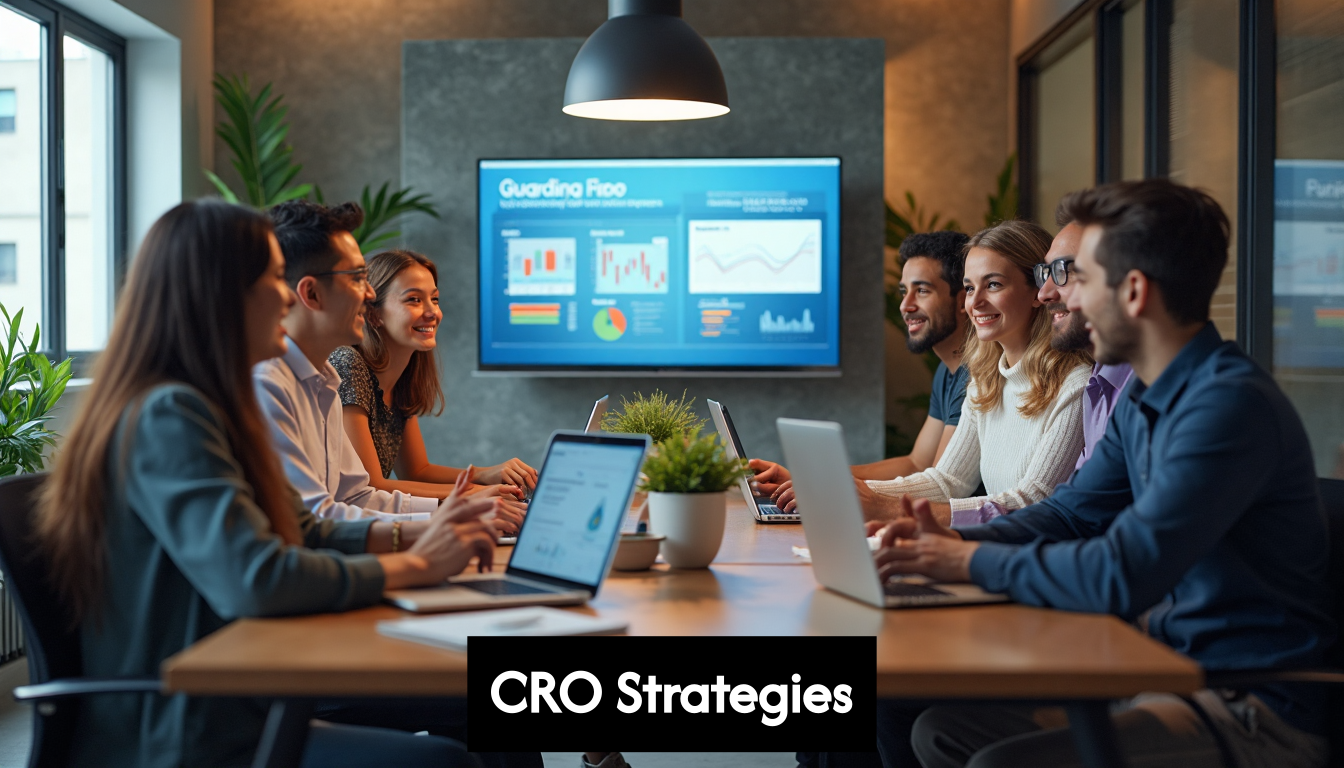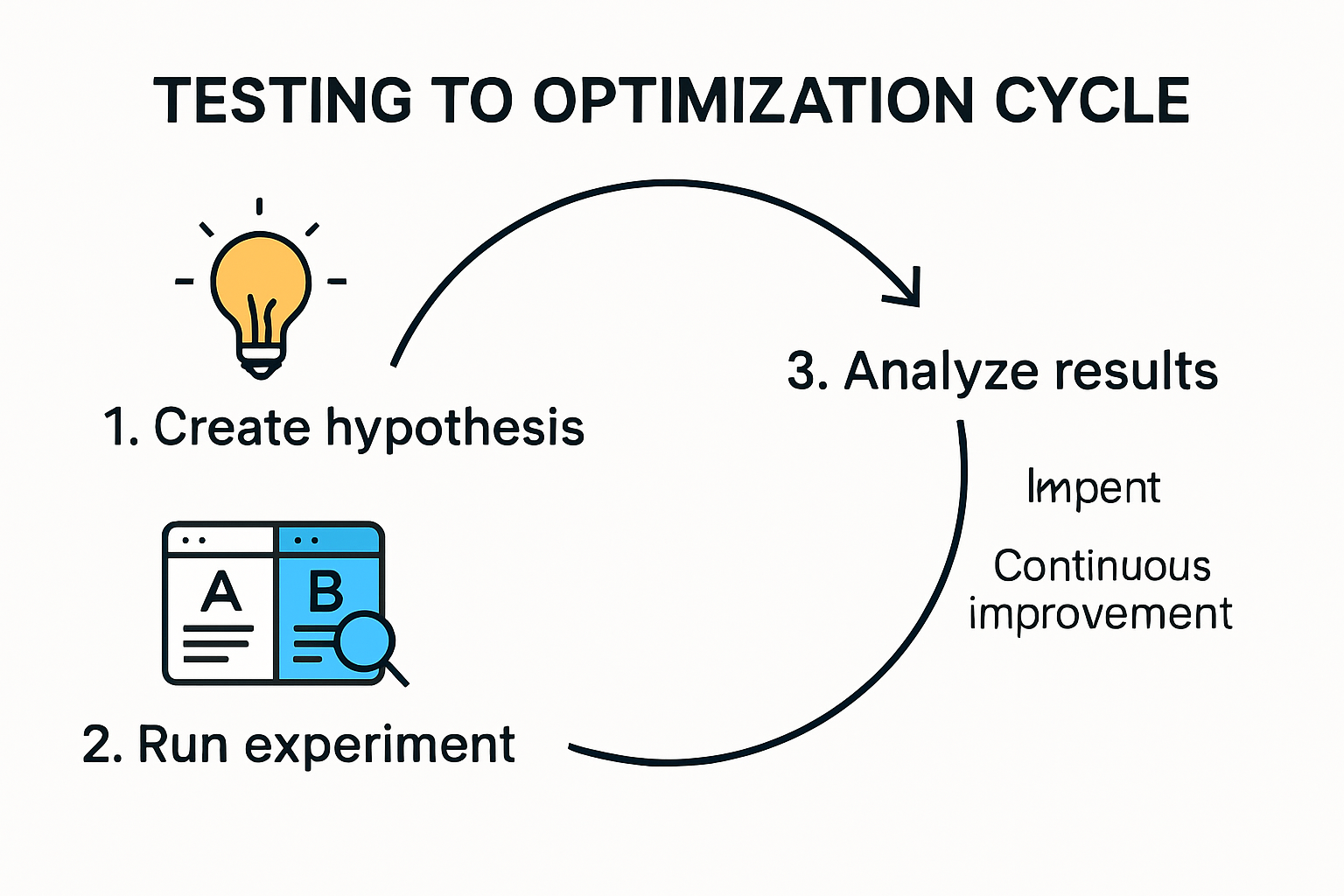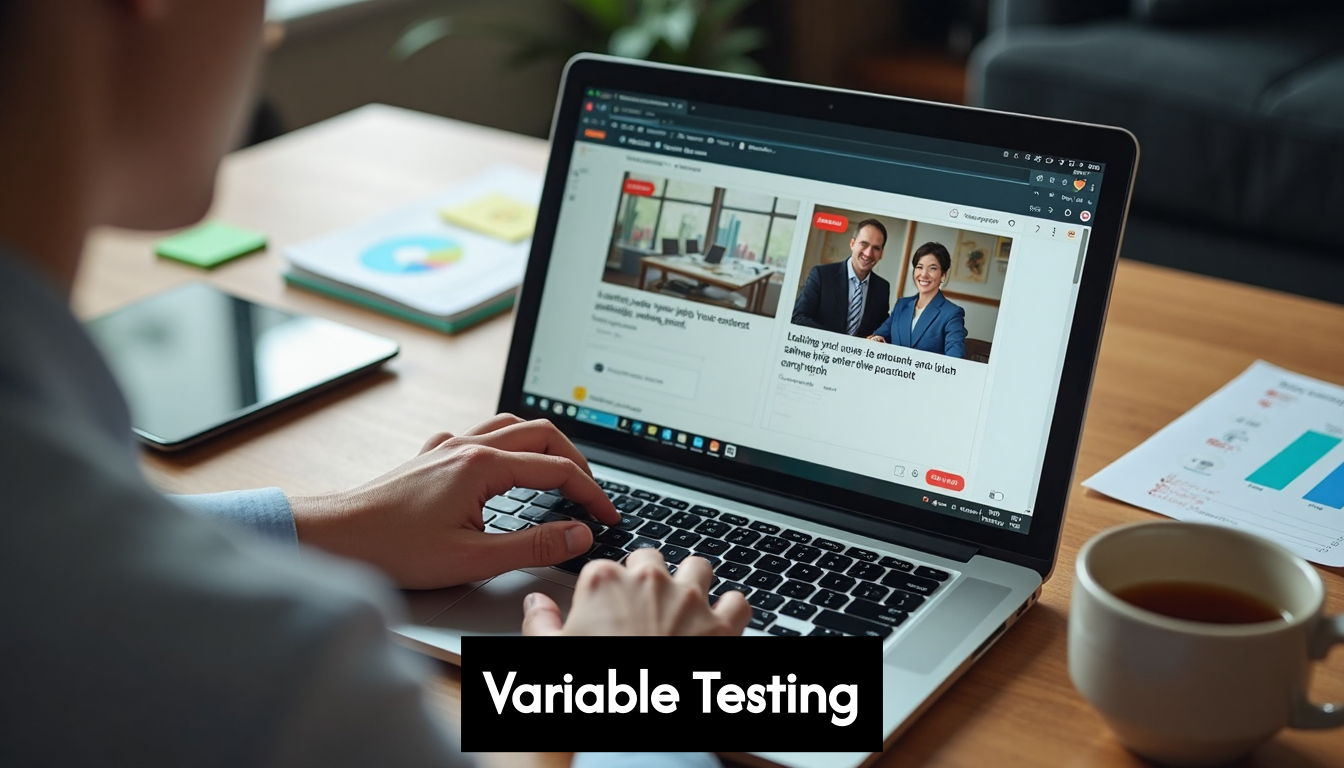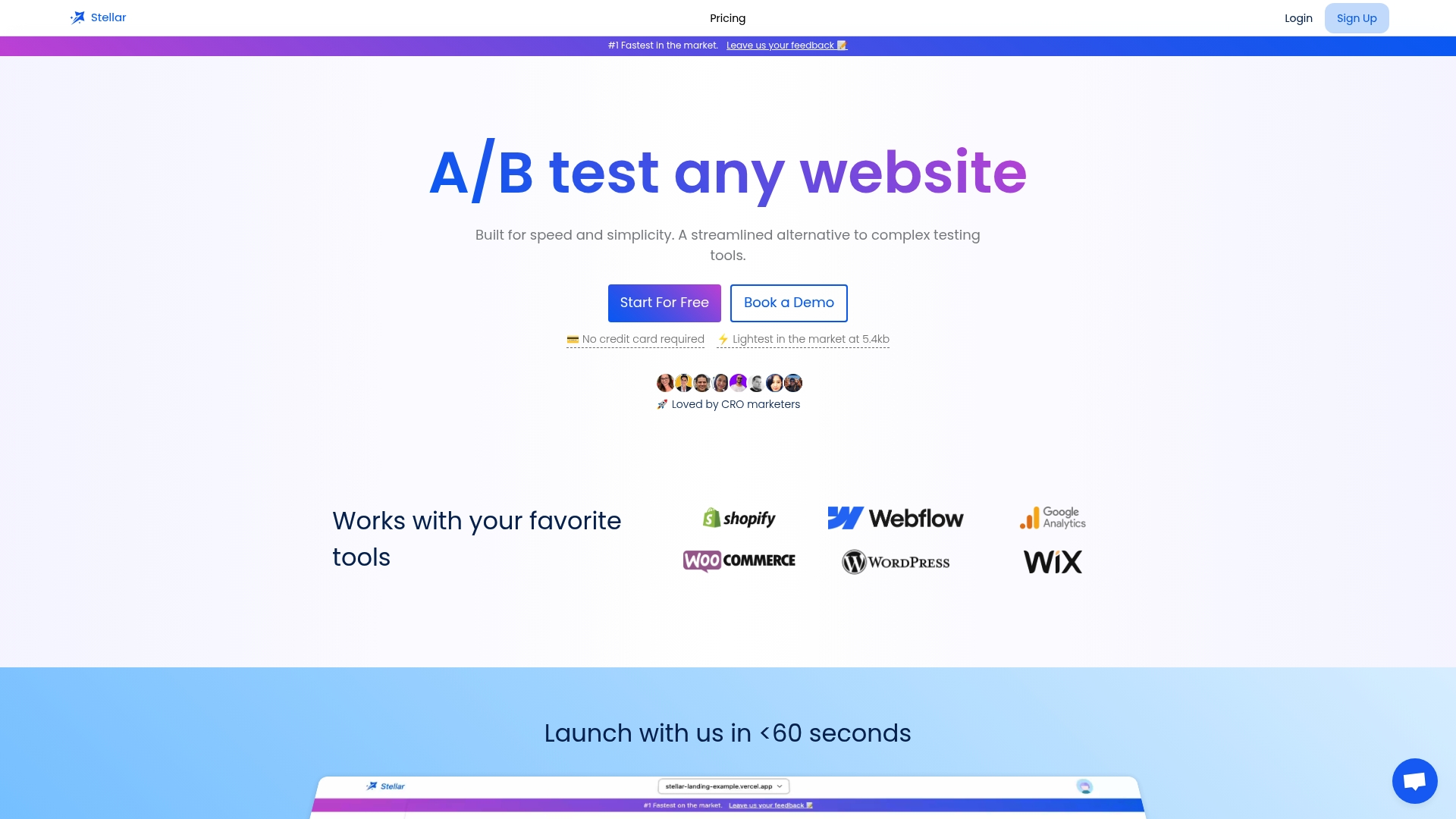
Testing to Optimize Conversions: CRO Strategies for 2025

Everyone talks about getting more conversions, but the majority still rely on guesswork rather than proof. Here is the wild part. A single A/B test can lift revenue by up to 40 percent, according to top analytics experts. Most companies churn out endless website tweaks with no real direction. The secret winners run systematic tests, measure what actually works, and then watch their sales grow while everyone else is just hoping for luck.
Table of Contents
- Why Testing To Matters For Cro Success
- Proven Testing To Methods For Teams
- Common Testing To Pitfalls And How To Avoid Them
- Maximizing Roi With Testing To In 2025
Quick Summary
| Takeaway | Explanation |
|---|---|
| Testing is Essential for CRO Success | Businesses must prioritize systematic testing to convert visitors effectively, moving away from intuition to data-driven strategies that enhance user interactions. |
| Implement Single Variable Testing | Conducting systematic A/B tests that focus on one specific element at a time helps in understanding which modifications positively impact conversion rates. |
| Embrace Continuous Testing | Organizations that adopt a culture of ongoing testing can maintain a competitive edge by continuously refining user experiences based on real data analysis. |
| Avoid Common Pitfalls | Success in conversion optimization requires a careful approach to data collection, segmentation, and the avoidance of premature conclusions from testing results. |
| Leverage AI for Optimization | The integration of AI can enhance testing capabilities by predicting user behavior and automating adjustments, thereby transforming data into strategic advantages. |
Why Testing to Matters for CRO Success
Converting website visitors into customers requires more than intuition. Testing to optimize conversions is the strategic backbone of modern digital marketing, transforming guesswork into precise, data-driven decision making.

The Data-Driven Imperative of Conversion Testing
In 2025, businesses cannot afford to rely on hunches. Conversion rate optimization has become a critical discipline where systematic testing reveals actionable insights. According to industry research, small strategic modifications discovered through A/B testing can dramatically improve conversion rates. Our comprehensive guide on testing solutions demonstrates how methodical experimentation unlocks performance potential.
The economics of digital marketing make testing not just beneficial, but essential. Acquisition costs continue rising, meaning businesses must extract maximum value from existing traffic. By understanding user behavior through rigorous testing, companies can optimize every interaction point, transforming casual browsers into committed customers.
Precision Performance Through Systematic Experimentation
Effective testing is not random tinkering. It requires a structured approach that combines data analysis, user psychology, and strategic implementation. Top performing organizations follow a consistent methodology:
- Hypothesis Generation: Develop clear, measurable hypotheses about potential improvements
- Controlled Experiments: Design A/B tests that isolate specific variables
- Statistical Validation: Ensure results are statistically significant before implementation
Professional CRO agencies emphasize that successful optimization means moving beyond surface-level changes. Deep understanding of user motivations, friction points, and conversion barriers separates exceptional marketers from average performers.
The Competitive Advantage of Continuous Testing
Businesses that embrace continuous testing create a sustainable competitive advantage. By constantly refining user experiences based on real data, they stay ahead of market shifts and evolving consumer expectations. According to research from leading digital marketing experts, companies committed to systematic testing see exponentially better results compared to those relying on static strategies.
The future of digital marketing belongs to organizations that transform testing from an occasional activity into a core operational principle. Your conversion optimization strategy should not just measure results but actively create them through intelligent, data-driven experimentation.
Remember: In the digital marketplace, those who test intelligently win consistently.
Proven Testing to Methods for Teams
Conversion rate optimization demands strategic approaches that transform data into actionable insights. Modern teams need robust testing methodologies that deliver precise, meaningful results without consuming excessive resources.
Systematic Single Variable Testing
Successful A/B testing hinges on isolating and analyzing individual variables. Research from leading optimization experts emphasizes the critical practice of changing one element at a time. This methodical approach allows teams to definitively understand which specific modifications drive conversion improvements.
For instance, teams might test:
- Headline Variations: Evaluating different messaging approaches
- Call to Action Buttons: Comparing color, placement, and wording
- Image Selection: Understanding visual impact on user engagement

By focusing on singular variables, marketing teams eliminate ambiguity and generate clear, statistically significant insights. Our speed-focused testing guide provides advanced techniques for executing these precise experiments efficiently.
Data-Driven Personalization Strategies
Personalization represents a sophisticated testing approach that goes beyond surface-level modifications. According to industry research, targeted experiences can dramatically increase user engagement and conversion rates.
Effective personalization testing involves:
- User Segmentation: Categorizing audiences based on behavior and characteristics
- Dynamic Content Adaptation: Tailoring experiences in real-time
- Predictive User Journey Mapping: Anticipating and addressing user needs
Teams that master personalization testing create experiences that feel intuitive and responsive, transforming generic interactions into meaningful connections.
Advanced Multivariate Testing Techniques
Beyond traditional A/B testing, sophisticated teams employ multivariate testing to understand complex interactions between multiple page elements. This approach allows simultaneous exploration of how different combinations of variables impact overall performance.
Multivariate testing enables teams to:
- Discover Synergistic Interactions: Understand how different elements work together
- Optimize Complex User Experiences: Test multiple design and content variations
- Generate Comprehensive Insights: Develop a holistic understanding of conversion dynamics
The most successful organizations treat testing not as a one-time activity but as a continuous optimization process. By embracing these proven methods, teams can systematically improve their digital experiences, turning data into tangible performance improvements.
Remember: Intelligent testing is about asking the right questions and being prepared to act on the answers.
Common Testing to Pitfalls and How to Avoid Them
Conversion rate optimization demands precision and strategic thinking. Even the most well-intentioned testing efforts can derail without careful planning and execution. Understanding common pitfalls is the first step toward creating robust, reliable optimization strategies.
Data Collection and Segmentation Challenges
Research from leading digital marketing experts reveals that improper audience segmentation is a critical error in conversion testing. Teams often fall into the trap of collecting data without truly understanding their user base. Our guide to performance testing emphasizes the importance of precise audience understanding.
Common segmentation mistakes include:
- Oversimplified User Profiles: Treating all users as a homogeneous group
- Inadequate Sample Sizes: Running tests with statistically insignificant data
- Ignoring User Diversity: Failing to account for different user behaviors and motivations
To overcome these challenges, teams must invest time in comprehensive user research. This means diving deep into analytics, conducting user interviews, and creating nuanced user personas that reflect real-world complexity.
Statistical Significance and Interpretation Errors
Misinterpreting test results is a dangerous pitfall that can lead to misguided optimization efforts. According to industry analysis, many teams make critical mistakes by:
- Premature Conclusions: Stopping tests too early
- Confirmation Bias: Seeking data that confirms existing beliefs
- Overlooking Contextual Factors: Failing to consider broader business implications
Successful testing requires patience and a disciplined approach. Statistical significance is not just a mathematical concept but a critical guardrail against false conclusions. Teams must establish clear parameters before launching tests, including:
- Minimum sample size requirements
- Confidence level thresholds
- Predetermined test duration
Avoiding Optimization Myopia
The most sophisticated CRO teams understand that testing is not about isolated improvements but holistic user experience enhancement. Conversion optimization research highlights the danger of focusing too narrowly on single metrics while ignoring broader user journey implications.
Key strategies to prevent optimization myopia include:
- Comprehensive Metric Tracking: Looking beyond simple conversion rates
- Cross-Channel Analysis: Understanding user interactions across different touchpoints
- Long-Term Performance Monitoring: Tracking changes over extended periods
Effective testing is an ongoing process of learning and refinement. The most successful teams view each test not as a destination but as part of a continuous optimization journey. They remain curious, humble, and committed to understanding the nuanced ways users interact with digital experiences.
Remember: In conversion rate optimization, wisdom comes from recognizing what you do not yet understand.
Maximizing ROI With Testing to in 2025
Converting digital investments into tangible business growth requires more than traditional marketing approaches. In 2025, testing to optimize conversions has become a precision instrument for driving remarkable return on investment across digital platforms.
Strategic Performance Measurement
Research from leading digital analytics experts reveals that sophisticated testing strategies can generate up to 40% more revenue through intelligent personalization. The key lies not just in running tests, but in connecting those tests directly to measurable business outcomes.
Successful ROI maximization involves:
- Comprehensive Metric Tracking: Aligning testing goals with core business objectives
- Advanced Attribution Modeling: Understanding the complete user conversion journey
- Predictive Performance Analysis: Forecasting potential improvements before implementation
Our website split testing guide provides deeper insights into translating testing data into strategic business decisions.
Leveraging User-Driven Insights
According to industry research, user-generated content now influences buying decisions for 85% of consumers. This statistic underscores the critical importance of testing strategies that prioritize authentic user experiences.
Key approaches for user-centric ROI optimization include:
- Sentiment Analysis: Understanding emotional triggers in user interactions
- Behavioral Segmentation: Creating targeted experiences for specific user groups
- Continuous Feedback Integration: Using real-time user data to refine testing strategies
The most successful organizations view testing not as a cost center, but as a strategic investment that continuously refines and improves digital performance.
AI-Powered Testing Evolution
Artificial intelligence is transforming conversion rate optimization in 2025. Optimization strategies for marketers highlight how machine learning algorithms can rapidly identify and implement high-impact testing modifications.
Advanced AI testing techniques enable teams to:
- Predictive Optimization: Anticipate user behavior before manual testing
- Automated Variation Creation: Generate multiple test scenarios dynamically
- Real-Time Performance Adjustment: Instantly adapt to emerging user trends
By embracing these sophisticated testing methodologies, businesses can transform raw data into strategic competitive advantages. The future of digital marketing belongs to organizations that can quickly learn, adapt, and optimize their user experiences.
Remember: In 2025, testing is not just about finding answers. It is about asking the right questions that drive meaningful business growth.
Frequently Asked Questions
What is Conversion Rate Optimization (CRO) and why is testing important?
Conversion Rate Optimization (CRO) involves systematically improving your website to increase the percentage of visitors who convert into customers. Testing is essential because it transforms guesswork into data-driven decisions, ensuring that changes made to enhance user experience are effective.
How can A/B testing improve my website's conversion rates?
A/B testing allows you to compare two versions of a webpage to determine which one performs better. According to experts, a single A/B test can boost revenue by up to 40% by isolating specific variables to see how they impact conversion rates.
What are some common pitfalls in conversion testing that I should avoid?
Common pitfalls include improper audience segmentation, premature conclusions from tests, and focusing too narrowly on single metrics. It's crucial to understand your audience fully, ensure statistically significant results, and consider the overall user journey when interpreting data.
How can AI enhance conversion rate optimization strategies?
AI can significantly enhance CRO by providing predictive analytics, automating testing processes, and offering insights based on user behavior. This technology helps marketers make informed decisions rapidly and optimize user experiences in real-time.
Tired of Guesswork? Test Smarter and Convert Faster with Stellar
If your team is stuck running endless site tweaks with little direction or clarity, you are not alone. This article highlights the pain of wasted time and rising acquisition costs when marketers rely on gut feeling instead of actionable data. Imagine finally seeing which A/B tests actually move the needle—no code or technical hassle required. With conversion rate optimization becoming mission-critical in 2025, your business deserves the kind of systematic, real-time testing and lightning-fast performance described here.

Why wait and risk losing sales to competitors who test smarter? Join marketers and growth hackers already using the fastest no-code A/B testing platform built for modern teams. Stellar lets you launch, track, and optimize every experiment with a visual editor and advanced goal tracking—all packed into a 5.4KB script that keeps your site blazing fast. Experience how Stellar makes data-driven growth effortless by trying it free today.
Recommended Articles
Published: 6/17/2025